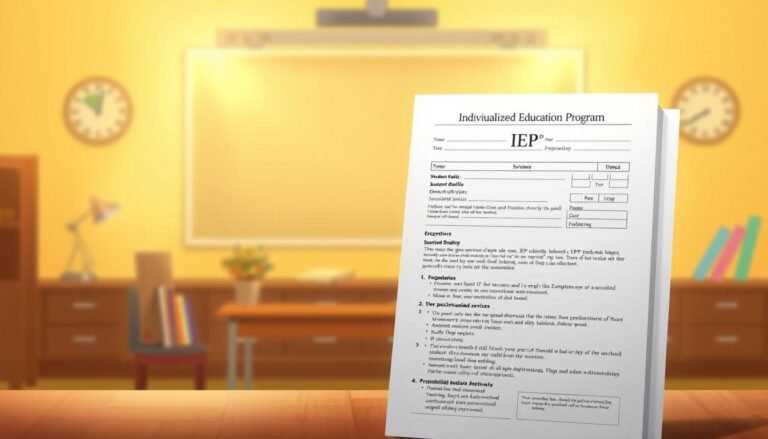
From Number Confusion to Spatial Challenges: Identifying Dyscalculia Symptoms – The Ultimate Guide
Introduction
Imagine a world where simple math calculations feel insurmountable, numbers seem to dance on the page, and spatial awareness is a constant struggle. Such is the reality for many individuals living with dyscalculia, a learning disorder that profoundly impacts a person’s ability to understand numbers and math concepts. In this comprehensive guide, From Number Confusion to Spatial Challenges: Identifying Dyscalculia Symptoms, we will explore the nuances of this condition, its signs, and how to identify them effectively.
Understanding dyscalculia is crucial—not just for educators and parents but for anyone who interacts with children and adults battling this condition. It’s a pervasive, yet often overlooked, obstacle that can hinder academic achievement, self-esteem, and daily functioning. Armed with the right knowledge, we can cultivate more supportive environments and provide strategies that empower those affected.
Understanding Dyscalculia
What is Dyscalculia?
Dyscalculia is a specific learning disability that affects an individual’s ability to understand and manipulate numerical concepts. Unlike simple math anxiety, dyscalculia is characterized by persistent difficulties in understanding number-related concepts, often leading to significant academic and life challenges.
Prevalence and Misconceptions
Research estimates that dyscalculia affects approximately 5-7% of the population, although some estimates suggest the number could be higher due to underdiagnosis. This condition can manifest alongside other learning disabilities such as dyslexia and ADHD, complicating its recognition and understanding.
Misconceptions abound—many people incorrectly assume that dyscalculia only affects school performance or is synonymous with being bad at math. Instead, it is important to understand that individuals with dyscalculia can struggle with various daily activities that involve numbers or spatial reasoning.
Identifying Dyscalculia Symptoms
Number Confusion
One of the most common symptoms of dyscalculia is number confusion. Individuals may:
- Struggle to distinguish between similar numbers (e.g., 2 and 3 or 6 and 9).
- Inadvertently transpose digits, leading to errors in calculations or phone numbers.
- Have difficulty sequencing numbers or recalling multiplication tables.
Case Study 1: Emma’s Journey
Take Emma, a bright student with a passion for art. Despite her creativity, she struggled with math from an early age. Teachers observed that she frequently confused numbers and mixed up math facts. After consulting a specialist, Emma was diagnosed with dyscalculia. Understanding her symptoms allowed Emma’s family to develop tailored strategies for her learning, enhancing her confidence in math-related subjects.
Spatial Challenges
Beyond numbers, spatial challenges are a significant aspect of dyscalculia. Symptoms may include:
- Difficulty understanding directions or interpreting maps.
- Struggles with spatial orientation—for instance, reversing objects or getting lost in familiar places.
- Challenges in measuring objects or understanding geometric concepts.
Case Study 2: Alex’s Spatial Awareness
Alex, a young boy fascinated by trains, often found himself disoriented whenever he visited new places, even those he had explored many times. His parents recognized that his trouble understanding relationships between spaces might indicate dyscalculia. They sought help, which ultimately aided Alex in developing spatial reasoning strategies, such as using visual landmarks to navigate.
Time Management Difficulties
Another lesser-known symptom of dyscalculia involves time management. Individuals may find it challenging to estimate time or manage schedules effectively. This can manifest as:
- Difficulty reading clocks or calculating durations.
- Trouble in estimating how long tasks will take, leading to disorganization.
Case Study 3: Sarah in the Workplace
Sarah, a college graduate, performed exceptionally well in her coursework but struggled in her first job due to challenges with time management. Tasks that required her to estimate project deadlines were overwhelming. After discussing her difficulties with a supervisor, Sarah accessed workplace accommodations. Identifying her dyscalculia symptoms enabled her to thrive in her role, using digital tools to help manage her time.
Mathematical Anxiety
It’s important to note that those with dyscalculia often face heightened anxiety around math-related tasks. They may exhibit:
- Panic or dread when faced with numerical problems.
- Avoidance behaviors, steering clear of situations that require mathematical skills.
Case Study 4: Jake’s School Experience
Jake’s story is one of many. He loved participating in science experiments but felt paralyzed during math tests. After being diagnosed with dyscalculia, Jake learned strategies to address his anxiety. With supportive teachers aware of his challenges, he was able to engage with math concepts without feeling overwhelmed, paving the way for success in both math and science.
Tools and Resources for Identification
Screening Tools
Early identification of dyscalculia can be essential for effective intervention. Some useful screening tools include standardized assessments, checklists for parents and teachers, and observation techniques.
Professional Evaluation
A comprehensive evaluation by a qualified professional—such as a psychologist or educational specialist—is essential. This thorough assessment might encompass cognitive testing, academic evaluation, and interviews with parents or educators to determine the presence of dyscalculia symptoms.
Support Strategies
Once identified, various strategies can help individuals navigate life with dyscalculia:
- Multi-sensory instruction: Engaging multiple senses to teach math concepts can significantly help.
- Use of technology: Calculators, educational apps, and visual aids can help reinforce learning without imposing undue stress.
- Building a supportive environment: Schools and families can play a crucial role in fostering understanding and reducing anxiety related to math.
Conclusion
Navigating the challenges posed by dyscalculia can be daunting, but understanding its symptoms—from number confusion to spatial challenges—can pave the way for effective strategies and interventions. While dyscalculia may make certain tasks perplexing, it does not define an individual’s potential.
By recognizing the signs and symptoms, we can foster a more inclusive and supportive environment that empowers those with dyscalculia to achieve success. Whether through tailored education plans, technology use, or emotional support, the journey from confusion to clarity begins with understanding and actionable strategies.
FAQs
1. What is dyscalculia, and how is it different from general math anxiety?
Dyscalculia is a specific learning disability affecting mathematical reasoning and number sense, while math anxiety is a feeling of tension faced when dealing with math tasks, which can be present without a learning disability.
2. Can dyscalculia be diagnosed in adults?
Yes, dyscalculia can be diagnosed in adults. Many individuals may not have been identified during childhood but continue to experience challenges with numbers and math.
3. What strategies can help someone with dyscalculia in the classroom?
Teachers can use multi-sensory teaching techniques, provide extra time for assignments, incorporate visual aids, and attend to individual learning styles to support students with dyscalculia.
4. Is dyscalculia hereditary?
Research suggests that dyscalculia can have a genetic component, meaning it may run in families. However, environmental factors also play a significant role.
5. Can early intervention improve outcomes for individuals with dyscalculia?
Absolutely! Early identification and intervention can significantly enhance learning strategies, boost self-esteem, and help individuals develop coping mechanisms.
6. Are there specific resources available for parents and teachers?
Yes, numerous resources exist, including educational websites, dyscalculia-focused apps, and community support groups designed for parents and educators alike.
In From Number Confusion to Spatial Challenges: Identifying Dyscalculia Symptoms, we aim to shine a light on an often-misunderstood condition. By spreading awareness and fostering supportive environments, we can help individuals with dyscalculia transition from confusion to confidence in their numerical and spatial abilities.
















